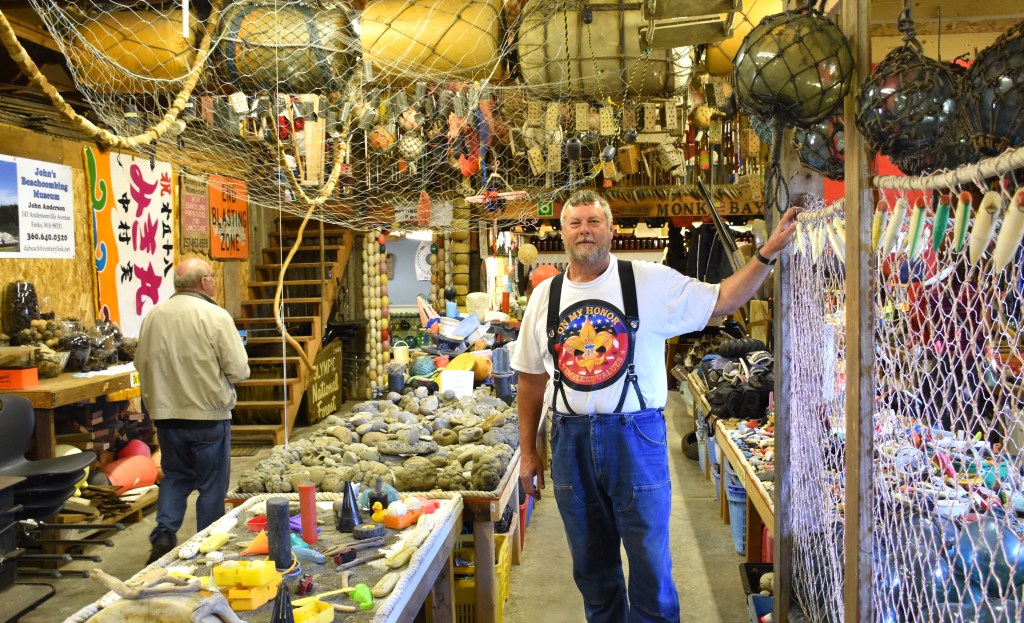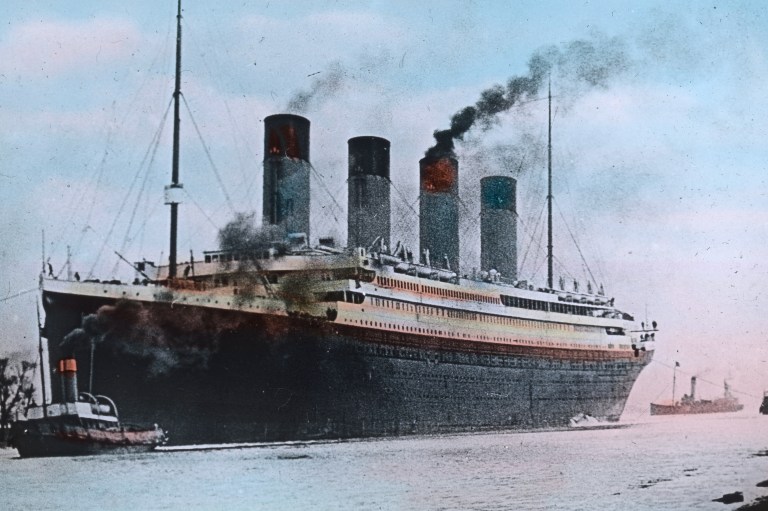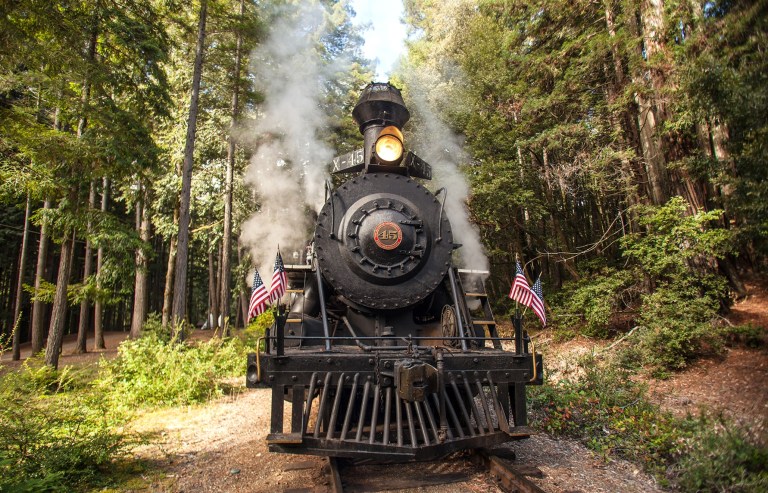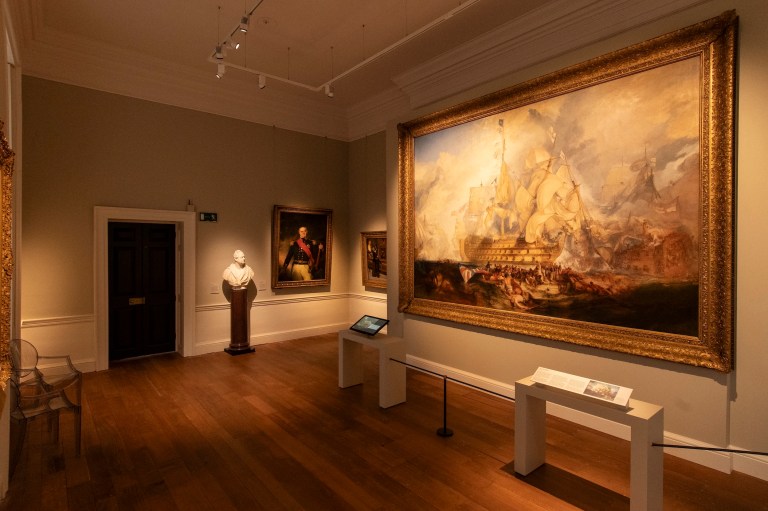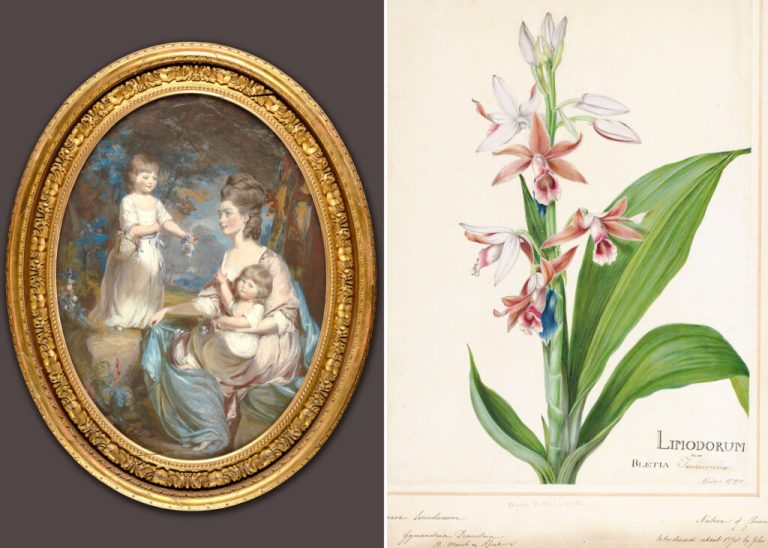Plenty of people enjoy spotting and snagging beach souvenirs — pretty shells, a sand dollar, perhaps. But for John Anderson, picking up treasures from the shore is more than a casual hobby. The Washington state resident has been beachcombing for nearly five decades, and he displays his countless finds in a makeshift museum that opens to visitors each summer.
His exhibits represent a vast world beneath the waves. He’s got thousands of colorful rubber buoys arranged into giant sculptural installations; a collection of Raggedy Ann doll heads from a container spill in the 1970s; a binder full of messages found in bottles; a juvenile gray whale skull; chains from medieval ships; and so much more.
“There’s a lot of history, and there’s a story in everything,” Anderson explained to NBC News of his passion for scouring the sand, adding: “One of the things that I never gave up from childhood was adventure.”
The retired plumber has been informally building up John’s Beachcombing Museum, located in his hometown of Forks on the Olympic Peninsula, since 1976, and he started welcoming the public to the establishment in the mid-2010s.

Anderson became hooked on picking up ocean flotsam back when he was 22 and came across “the holy grail” of beachcombing finds: a Japanese glass float, a type of fishing instrument that stopped being manufactured in the middle of the 20th century.
“That’s what most people go beachcombing for is glass floats because they look cool, they’re collectible,” he explained to Northwest Public Broadcasting in 2022. “It’s amazing they survive washing over and washing up on the beaches and not get broken.”

Now, his artifacts, stored in and out front of his former plumbing shop, span many more eras of history. “My first favorite thing that I found was a fossilized mammoth tooth from the Pleistocene era,” he told the outlet. “I didn’t know what it was, [The] University of Washington [identified] it and dated it for me.”

There are dozens of Nike shoes that washed up from the “Great Shoe Spill” of 1990 — when tens of thousands of sneakers fell overboard into the Pacific during a violent storm — as well as items from the 2011 tsunami in Japan, carried over from the Eastern hemisphere by ocean currents.
Anderson has dedicated a corner of the museum to displaying the latter. In 2013, he traveled to Japan with other beachcombers from the Pacific Northwest to return some of the found objects to their owners, including a volleyball covered with hand-scrawled names. The trip was chronicled in the documentary Lost and Found.
As for his book of messages pulled from bottles, at least one note has been recognized by museum guests, he says.
“I had a young gal [in] here one day — she was in her early 20s, she was reading the messages. She was like ‘Oh my god! That was my boyfriend in high school.’ It was like an 8-year-old kid who wrote this note in a bottle, that was her boyfriend in high school,” Anderson recalled to NWPB. “Two weeks later, there was a young guy in here and he looked at [the same note]. He says, ‘I know that guy, he was one of my buddies in high school.’”
His wife Deb, whom he met the same year he started beachcombing, supports his hobby and displays her own passion in the museum as well. When guests walk in, they’re greeted by driftwood sculptures she’s created.
If you’re feeling inspired to take a stroll along the beach and see what you can find, Anderson has some advice: “Get your pack and get up early in the morning and go to some remote beaches. Get a big building to put it in. Hope your wife lets you haul it all home.”
